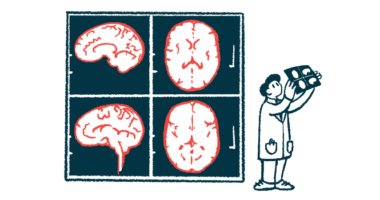Powerful MRI scanner opens ‘whole new world’ in brain imaging
Iseult project yields first images of live human brain

Scientists at the French Alternative Energies and Atomic Energy Commission (CEA) released the first images of a live human brain acquired with the world’s most powerful MRI scanner, the Iseult MRI machine.
“With the Iseult project, a whole new world is opening up before our eyes, and we are excited to explore it,” Nicolas Boulant, PhD, head of the Iseult project and director of research at the CEA, said in a press release from the organization.
Though work to fine-tune the machine is ongoing, the researchers say they expect to start using the new scanner to investigate brain disorders like Parkinson’s disease in the next few years.
MRI scanners use powerful magnets and radio waves to image structures within the body. MRI scanners with more powerful magnets are able to get clearer pictures in less time.
Massive scanner could provide insight into Parkinson’s brain changes
An MRI machine at a typical hospital has a magnet with a strength of 1.5 Tesla or 3 Teslas. One Tesla is about 20,000 times the strength of the earth’s magnetic field at the surface. Some scanners with up to 7 Teslas have been explored for research purposes. The Iseult scanner’s magnet has an “unmatched” 11.7 Teslas, the CEA said.
The CEA said the new scanner is able to generate brain images with 0.2 mm in-plane resolution and 1 mm slice thickness in just four minutes. To get that kind of resolution, a standard MRI machine would need to scan for hours — and the results probably wouldn’t be usable because small movements from the patient could blur the images.
By enabling faster and more detailed scans of the brain, the new scanner promises to allow more detailed investigations into how brain structures change in neurodegenerative diseases like Parkinson’s.
“We still need several years of research to develop and improve our acquisition methods and ensure that the data has the highest quality possible,” Boulant said. “Our goal is to investigate neurodegenerative diseases by 2026-2030.” The Iseult scanner may also prove useful for understanding psychiatric diagnoses and cognitive problems, he said.
We are incredibly proud to see this end result of an almost 20-year-long R&D project.
Creating the new scanner was a massive effort involving hundreds of researchers working together for more than two decades.
The scanner itself is also massive. It’s about five meters (16 feet) square and weighs 132 tons. Packed inside the device are more than 180 km (over 110 miles) of superconducting wires, and the scanner uses 7,500 liters of liquid helium to keep the magnet at a chill -271 C (-456 F).
“We are incredibly proud to see this end result of an almost 20-year-long R&D project,” said Anne-Isabelle Etienvre, PhD, director of fundamental research at the CEA. “Neuroscientists, physicists, mathematicians and physicians … worked together to develop the tools and models that will help better understand how healthy and diseased brains work, expanding the horizons of explorations on the human brain.”







